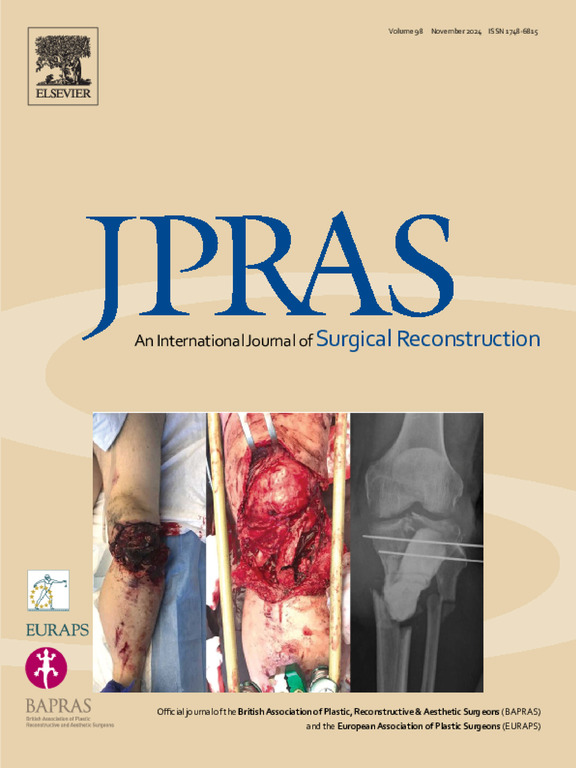美国整形外科住院医师的面部美学训练:住院医师暴露和市场需求的多来源分析
IF 2.4
3区 医学
Q2 SURGERY
Journal of Plastic Reconstructive and Aesthetic Surgery
Pub Date : 2025-07-25
DOI:10.1016/j.bjps.2025.07.016
引用次数: 0
摘要
本研究通过比较935名独立住院医师(2013-2021年)的全国ACGME病例日志数据和国际美容整形外科学会(2014-2022年)报告的全球和美国手术量趋势,评估了美国整形外科住院医师的手术暴露与面部美容手术需求之间的关系。对五种面部美容手术,鼻整形、眼睑整形、拉皮、提眉和其他头颈部美容手术的比较趋势分析显示,鼻整形(每年4.35%,p=0.046)、眉拉皮(4.22%,p=0.002)和其他头颈部手术(5.60%,p=0.048)的住院病例数量显著增加,而眼睑整形和拉皮手术的住院病例数量没有显著增长。相比之下,美国的眼睑成形术和拉皮术的市场需求分别以每年4.90%和5.70%的速度增长。这些发现突出了当前培训暴露与不断发展的程序趋势不同的领域,并为评估住院医师教育与面部美容手术市场需求之间的一致性提供了客观框架。本文章由计算机程序翻译,如有差异,请以英文原文为准。
Facial aesthetic training in U.S. plastic surgery residency: A multi-source analysis of resident exposure and market demand
This study assesses the relationship between operative exposure in U.S. plastic surgery residency and procedural demand in facial aesthetics by comparing national ACGME case log data from 935 independent-track residents (2013–2021) with global and U.S. procedural volume trends reported by the International Society of Aesthetic Plastic Surgery (2014–2022). A comparative trend analysis of five facial aesthetic procedures, rhinoplasty, blepharoplasty, facelift, brow lift, and other head and neck aesthetic procedures, showed that resident case volume increased significantly for rhinoplasty (4.35% annually, p=0.046), brow lift (4.22%, p=0.002), and other head and neck procedures (5.60%, p=0.048), while no significant growth was observed for blepharoplasty or facelift. In contrast, U.S. market demand for blepharoplasty and facelift increased by 4.90% and 5.70% annually, respectively. These findings highlight areas where current training exposure diverges from evolving procedural trends and provide an objective framework for evaluating alignment between residency education and market demand in facial aesthetic surgery.
求助全文
通过发布文献求助,成功后即可免费获取论文全文。
去求助
来源期刊
CiteScore
3.10
自引率
11.10%
发文量
578
审稿时长
3.5 months
期刊介绍:
JPRAS An International Journal of Surgical Reconstruction is one of the world''s leading international journals, covering all the reconstructive and aesthetic aspects of plastic surgery.
The journal presents the latest surgical procedures with audit and outcome studies of new and established techniques in plastic surgery including: cleft lip and palate and other heads and neck surgery, hand surgery, lower limb trauma, burns, skin cancer, breast surgery and aesthetic surgery.

 求助内容:
求助内容: 应助结果提醒方式:
应助结果提醒方式:


